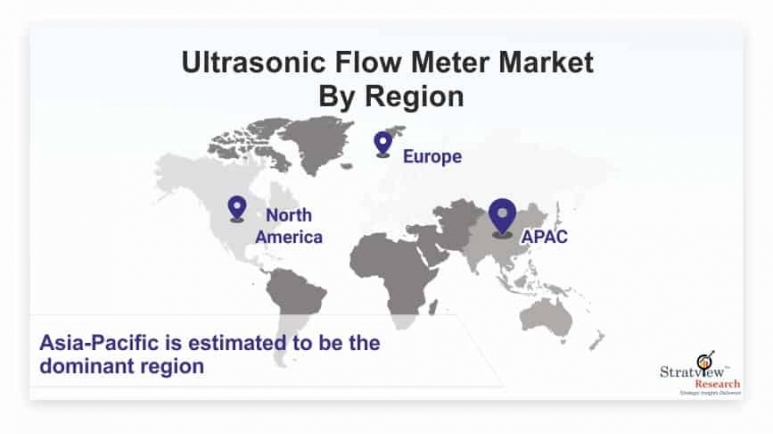What is the future of Ultrasonic Flow Meter Market? Know Covid Impact on Size, Share & Forecasts

July 26,2021 / IndustryNewsGlobal / The unexpected shifts in the global markets because of the sudden outbreak of the COVID-19 virus have brought many major and minor tremors to industries of all sizes including the Ultrasonic Flow Meter Market .
Ultrasonic Flow Meter Market is likely to witness an impressive CAGR of 6.8% during the forecast period. Increasing investments in green fields in the regions such as China, surge in demand for advanced flow measuring technologies, and growth in shale gas exploration activities in the US. are the major governing factors fueling the growth of the market during the forecast period.
Ultrasonic flow meter is a volumetric device which helps in measuring the flow of fluids with the ultrasound to calculate volume flow. Ultrasonic flow meter can also be used for bidirectional flow and it offers higher accuracy of the order of +/- 2% of full scale. It is expensive and has a complex structure which offers very good and dynamic response. It is generally used for wastewater application or any dirty liquid which is conductive or water based.
This report studies the market covering a period of 12 years of trend and forecast. The report provides detailed insights into the market dynamics to enable informed business decision making and growth strategy formulation based on the opportunities present in the market.
Based on the implementation type, the ultrasonic flow meter market is segmented as clamps-on, inline, and others. The clamps-on segment led the market in 2020, and is expected to remain dominant during the forecast period. The segment helps in measuring the flow without interruption in the process. In addition, the flow rate under different challenging environment areas is expected to boost the market's demand.
Based on the technology type, the market is segmented as transit-time, doppler, and hybrid. The transit-time segment captured the largest share of the market in 2020, and is expected to grow at the fastest pace during the forecasted period, owing to its bi-directional and precise flow measurement advantages. Further, the segment holds over 80% share of the total market.
Based on the end-user type, the market is segmented as oil & gas, power generation, water & wastewater, and others. The oil & gas segment leads the market and is likely to be the fastest-growing segment during the forecasted period due to the accurate flow measurement, which is required for custody transfer applications.
In terms of regions, Asia-Pacific is estimated to dominate the ultrasonic flow meter market during the forecast period as the region's most players are operating in flow meters, that find their manufacturing plants in the Asia-Pacific region. The number of investments is increasing in water & wastewater, energy, power, refining, chemicals, in China and India, which is driving the growth of the market.
Key Players:
- Siemens
- Danfoss
- Fuji Electric
- Badger Meter
- GE
- Endress+Hauser
- Honeywell
- KROHNE.
Features of the Report
This report offers high-quality insights and is the outcome of detailed research methodology comprising extensive secondary research, rigorous primary interviews with industry stakeholders and validation and triangulation with Stratview Research’s internal database and statistical tools.
The Ultrasonic Flow Meter Market analysis report discusses the following heads in great detail:
- Market structure: Overview, industry life cycle analysis, supply chain analysis
- COVID-19 Impact Assessment
- Market environment analysis: Growth drivers and constraints, Porter’s five forces analysis, SWOT analysis
- Market trend and forecast analysis
- Market segment trend and forecast
- Competitive landscape and dynamics: Market share, product portfolio, product launches, etc.
- Attractive market segments and associated growth opportunities
- Emerging trends
- Strategic growth opportunities for the existing and new players
- Key success factors